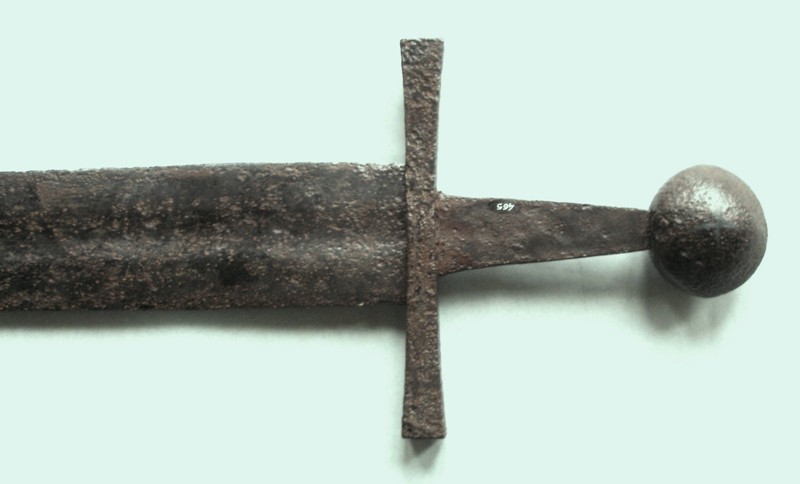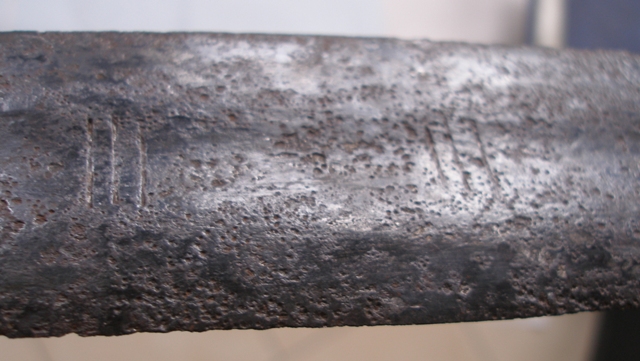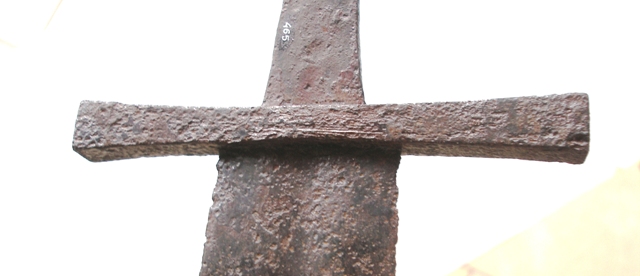it is a splendid sword of the end of twelfth, beginning of the thirteenth century and I am in order to begin its restoration.
Probably it belonged to a crossed soldier, according with the silver cross on its pommel.
I need a little help. According you, what is its Oakeshott classification?
Tkank you so much
Cesare

The sword


Cross on the pommel

Pommel profile

Decorations on blade

